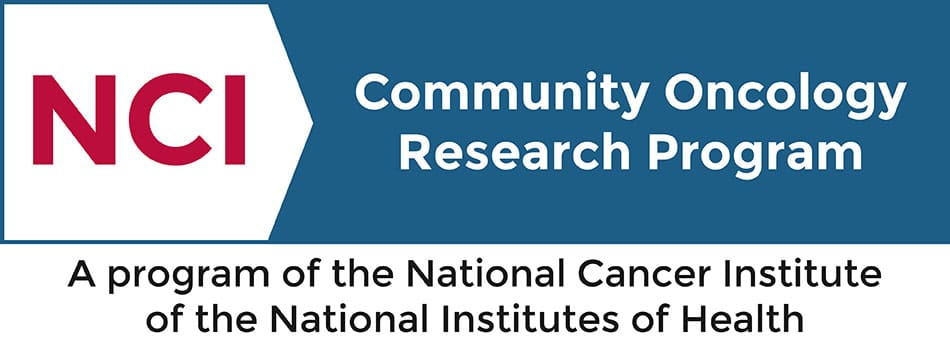- OUR PATIENTS
- Patient Forms
- Cancer Support Services
- Screenings
- Educational Programs
- Preparing For Your Visit
- Patient Portal
- Billing and Insurance
- Visitor Information
Lymphedema Management Program
What is Lymphedema?
Unlike the circulatory system with arteries and veins, the lymphatic system is composed of vessels with a different and unique pumping mechanism. This lymphatic system includes body tissue fluid with substances such as protein, water, fatty acids, and microorganisms.
Surgery or radiation may impair some of the lymphatic vessels. The remaining healthy and functioning lymph vessels may not be able to handle all of the body tissue fluid. This results in fluid overload. Various levels of swelling, known as lymphedema, may develop over time.
Currently there is no known cure for lymphedema, however, it can be managed in several ways. Lymphedema is often underrecognized by individuals, thus it is important to be vigilant about changes in the body part near the surgical site. These changes may include swelling in any area of an extremity, a sense of heaviness or firmness, pain or aching, stiffness, or impaired movement. Early diagnosis of lymphedema is important. This is when treatment is most effective! Relieving lymphedema related problems is an important part of cancer care and treatment. Discuss any lymphedema symptoms or changes with your health care provider.
Lymphedema evaluations and treatment are provided by occupational therapists (OT) at Capital Health. The occupational therapist who specializes in lymphedema management has acquired special training and certification as a certified lymphedema therapist (CLT). The occupational therapist works closely with patients to provide evidence-based treatment programs tailored to meet each individual’s needs.
Lymphedema management goals include the following:
- Education regarding best care and management
- Swelling reduction
- Improvement of motion and function
- Improved appearance (cosmesis) of the area
- Prevention of advanced lymphedema
- Prevention from infection
A physician or nurse practitioner referral to the Lymphedema Occupational Therapy program is necessary to begin the program.
Treatments
Relieving side effects is an important part of cancer care and treatment. Talk with your health care team about any lymphedema symptoms you have. Make sure to bring up any new symptoms or a change in your symptoms.
Lymphedema treatments:
- Reduce swelling
- Prevent it from getting worse
- Prevent infection
- Improve how the affected body part looks
- Improve the person’s ability to function
Although treatment can help control lymphedema, it currently does not have a cure. Your doctor may recommend a certified lymphedema therapist (CLT). The CLT can develop a treatment plan for you, which may include:
Manual lymphatic drainage (MLD)
MLD is a non-invasive manual technique that can have a powerful effect on the body. During this treatment, the skin is stretched in a way that encourages lymph flow, moving fluid from your swollen areas into a place where the lymphatic system is working normally.
Very different from traditional forms of massage that rely on deep and rigorous rubbing, MLD is targeted to a specific area, and is extremely gentle. It should feel as if the skin is being brushed, not rubbed or kneaded. If performed correctly with the correct pressure, direction and speed, this low intensity treatment can greatly enhance recovery and facilitate drainage.
Two or three treatments are recommended post-op, which can start 24 hours after surgery (with written physician approval). Trauma (surgery) can depress the function of the lymphatic system. MLD is used to stimulate temporary rerouting of the lymph to functional vessels and nodes to reduce swelling. The work achieves a wide variety of benefits, but the most significant in post-op situations is the reduction of pain, bruising and edema.
Upper Extremity Therapy
Therapy often includes:
- Therapeutic wrapping to help reduce lymphedema
- Personalized therapeutic exercise program to increase and maintain active range of motion of the upper extremity
- Instruction in skin care and other precautions
- Occupational therapy sessions often start with five times per week and generally decrease in frequency over six weeks. Obtain a prescription for therapy from your physician to meet with a therapist who will evaluate your symptoms, listen to your concerns and to tailor a program for your condition.
For more information or to schedule an appointment, please call 609-278-5490.
Patient Navigator
The Patient Navigator at The Capital Health Center for Oncology is here to assist all oncology patients and families with support and resource needs, both within Capital Health and in the community. She will advocate for and with you as you move from diagnosis through active treatment and survivorship.
The Patient Navigator is available to assist with…
- accessing cancer care and navigating the healthcare system
- assessing barriers to care and creating potential solutions to keep you on track to follow and complete your recommended treatment plan
- understanding the multi-disciplinary nature of cancer treatment and the roles of healthcare team members
- getting answers to your questions in an efficient and timely manner by reaching out to your healthcare team and/or locating printed and online information
- tracking and maintaining your own records of your diagnosis and treatment
- scheduling appointments with on-site providers: doctors, social worker, nutritionist, chaplain, Oasis spa
- locating services within the community: wigs, complementary therapy, mental health counseling,
- arranging transportation to Capital Health for all oncology-related appointments
- arranging hotel accommodations for family members
The services of the Patient Navigator are provided at no additional cost to you or your insurance company.

